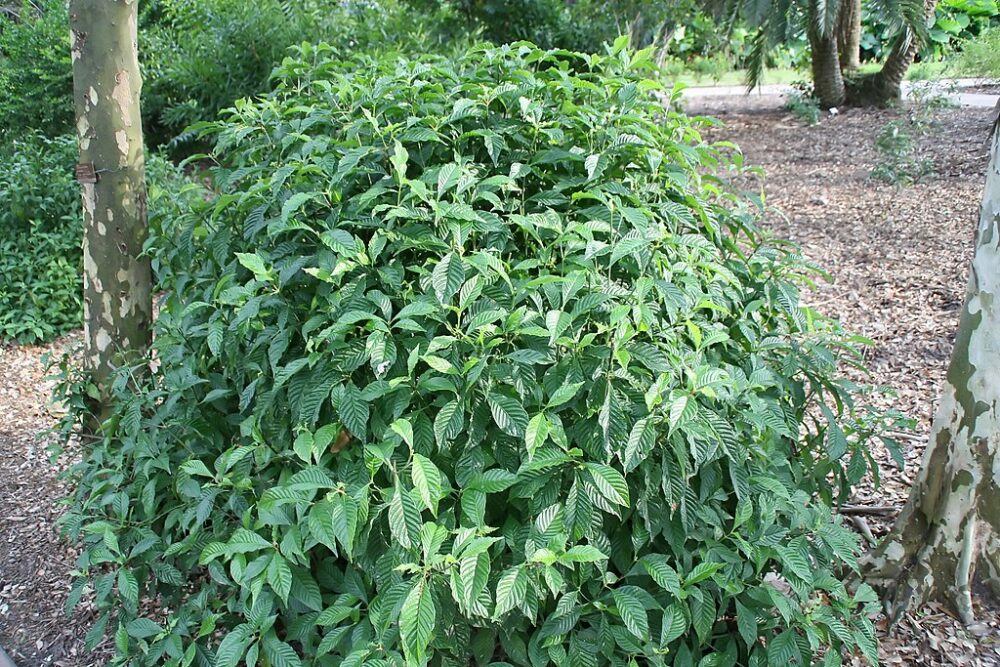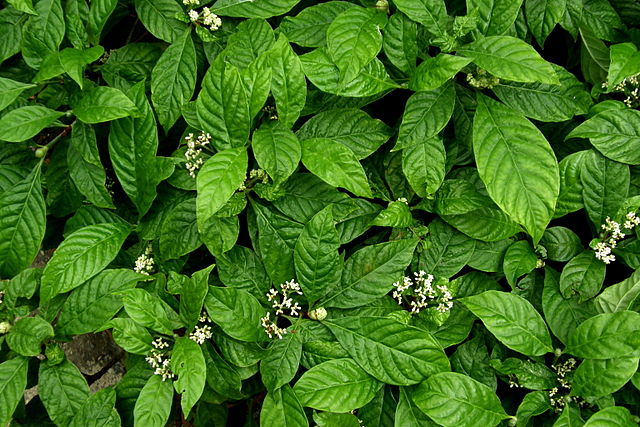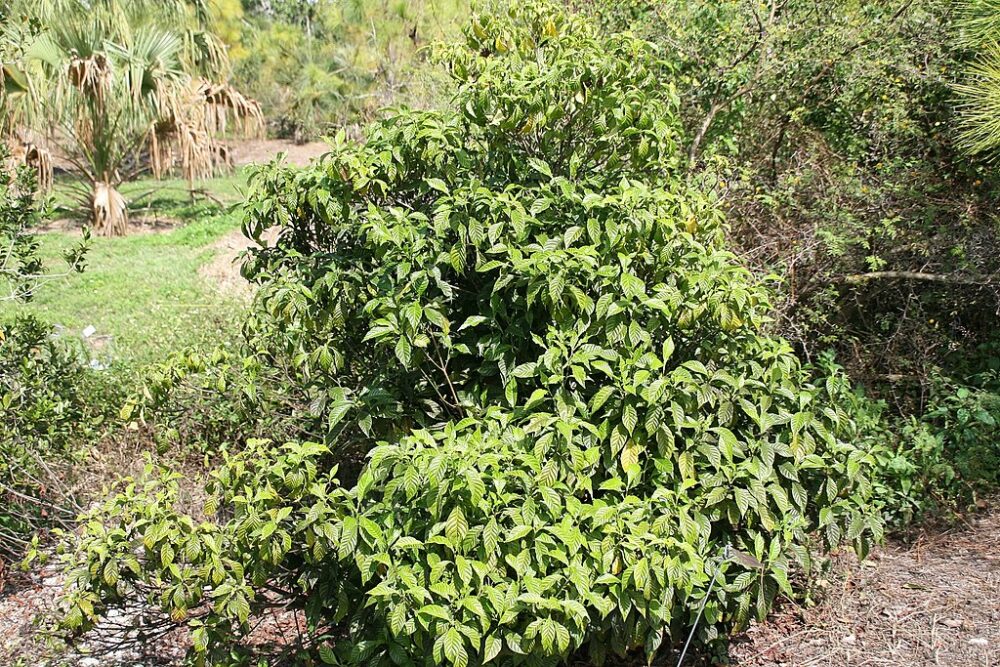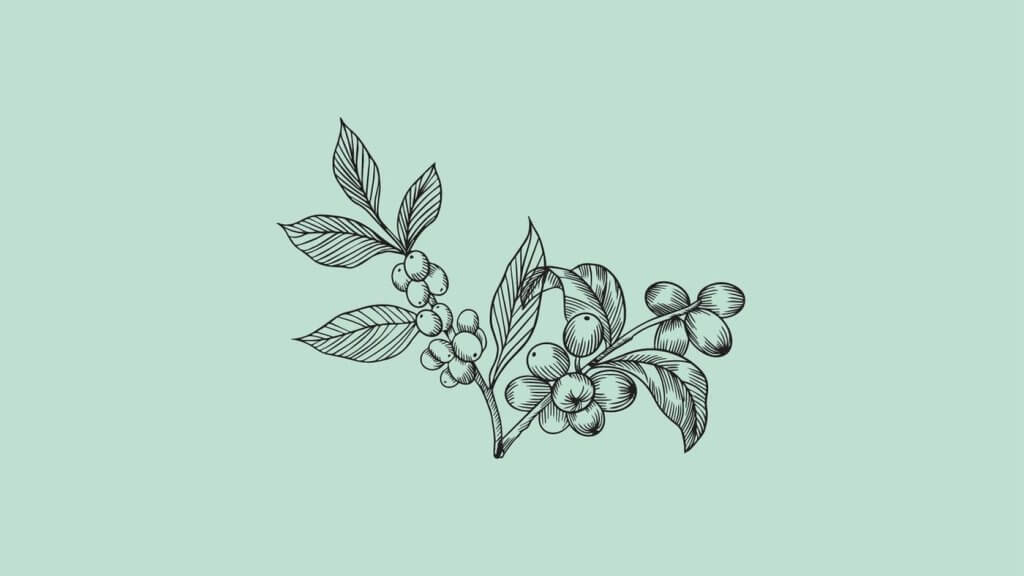Wild coffee (Psychotria nervosa) is an ornamental plant native to Florida and commonly used in landscapes. The seeds can be used as a caffeine-free coffee substitute when roasted, but do so with caution, as some sources suggest the brew may cause headaches.
Wild coffee plant profile
| Scientific name | Psychotria nervosa |
| Family name | Rubiaceae (coffee, bedstraw, or madder family) |
| Plant type | Evergreen shrub |
| Kingdom | Plantae |
| Genus | Psychotria |
| Phylum | Vascular plant |
Common names include:
- wild coffee
- seminole balsamo
How to Identify Wild Coffee?
Here are key characteristics to consider:
- Leaves:
- Psychotria nervosa has glossy, elliptical leaves that are arranged opposite each other on the stem.
- The leaves can be 4 to 8 inches long and have a prominent midrib.
- Stem:
- The plant typically grows as a shrub or small tree with a woody stem.
- Flowers:
- Look for small, white flowers. They are usually tubular and arranged in clusters.
- Fruit:
- The plant produces small, fleshy, red or black berries that contain seeds.
- Habitat:
- Psychotria nervosa is native to tropical regions and is often found in shaded areas of rainforests and humid environments.
- Location:
- In its native habitat, you may find Psychotria nervosa growing in places like Florida and other parts of Central and South America.



What Are You Foraging For Right Now?
We're thrilled to hear your ideas. What would you like to submit today? Feel free to share your thoughts and experiences with us.
Where Does Wild Coffee Grow?
This Florida native plant grows naturally in coastal, hydric, mesic, and rockland hammocks.
It prefers hardiness zones 10 to 11.
It also grows in:
- Central America: Wild coffee can be found in various countries in Central America, including regions of Mexico, Guatemala, Honduras, Nicaragua, Costa Rica, Panama, and Belize.
- South America: In South America, wild coffee is native to countries such as Colombia, Ecuador, Peru, Venezuela, Brazil, and other tropical areas.
Is Wild Coffee Poisonous in Any Way?
Psychotria nervosa is not considered poisonous for humans. However, while the berries and the seeds inside are used to make coffeine-free coffee, wild coffee leaves and stems are inedible.
Wild coffee is poisonous for both cats and dogs.
Can You Make Coffee From Wild Coffee?
The seeds of Psychotria nervosa have been used as a caffeine-free coffee substitute. However, it’s important to note that while the seeds may resemble coffee beans, they come from a different plant family than the true coffee plant (Coffea species). This means the taste and flavor profile of the wild coffee seeds are different from traditional coffee.
If you’re interested in making coffee from wild coffee seeds, here’s a basic process you can follow:
- Harvesting Seeds:
- Collect the ripe seeds from the Psychotria nervosa plant.
- Drying:
- Clean the seeds and allow them to dry thoroughly.
- Roasting:
- Roast the dried seeds. You can do this in a pan or using an oven. Roast until the seeds turn brown and develop a roasted aroma.
- Grinding:
- Once roasted, allow the seeds to cool and then grind them into a coarse or fine powder, depending on your preference.
- Brewing:
- Use the ground wild coffee seeds like traditional coffee. You can brew them in a coffee maker, French press, or any method you typically use for coffee preparation.
Caution:
- Some sources suggest that the brew made from wild coffee seeds may cause headaches in some individuals. It’s advisable to start with small quantities to gauge individual reactions.
A delicious alternative to using wild coffee is mushroom hot chocolate.
What Does Wild Coffee Taste Like?
Nothing like coffee beans; the taste is mild and has a musky, earthy aftertaste.
Some individuals note nutty or woody undertones in the flavor profile of wild coffee.
Does Psychotria Nervosa Contain DMT or Caffeine?
The wild coffee fruit does not contain any caffeine, unlike its cousin, Coffea arabica, derived from our morning cup of coffee.
Reports of DMT in this species are unsubstantiated.
Some other species of the Psychotria family, including Psychotria viridis, produce the psychedelic chemical dimethyltryptamine.
Any Other Uses for Wild Coffee?
Wild coffee grows well as a hedge or espalier.
Additionally, it can be used as a foundation, border, or mass planting.

Can You Forage for Wild Coffee in the Wild?
Yes, you can. Foraging for wild coffee (Psychotria nervosa) in the wild may be possible in regions where the plant is native or has become naturalized.
It is found in various parts of Florida, including both the northern and southern regions of the state.
Before foraging for any wild plant, it’s crucial to be aware of and adhere to local laws and regulations.
Is Wild Coffee Invasive?
Wild coffee is not considered an invasive species.
Can You Grow Wild Coffee?
Yes, you can. Wild coffee is a popular choice for South Florida landscapes due to its beautiful evergreen foliage and low maintenance requirements.
- It is best suited for an accent or specimen plant, although several plants planted together can form a loose hedge.
- Despite being relatively salt- and drought-tolerant, it does not flourish when exposed to excessive sun or freezing temperatures.
- No matter where or how you intend to use your wild coffee, it must be planted in well-drained soil to succeed.
- When grown in partial to full shade, these plants will do well; in full sun, they will become yellowed and remain small.
Ana has always been interested in all things nature and flora. With her expertise in home gardening and interest in foraging, she has been spending her weekends and free time looking for edible native plants, flowers, and fungi. One of her many hobbies includes testing new savory and sweet recipes, juices or teas made from freshly picked plants, wild fruits, or mushrooms.

